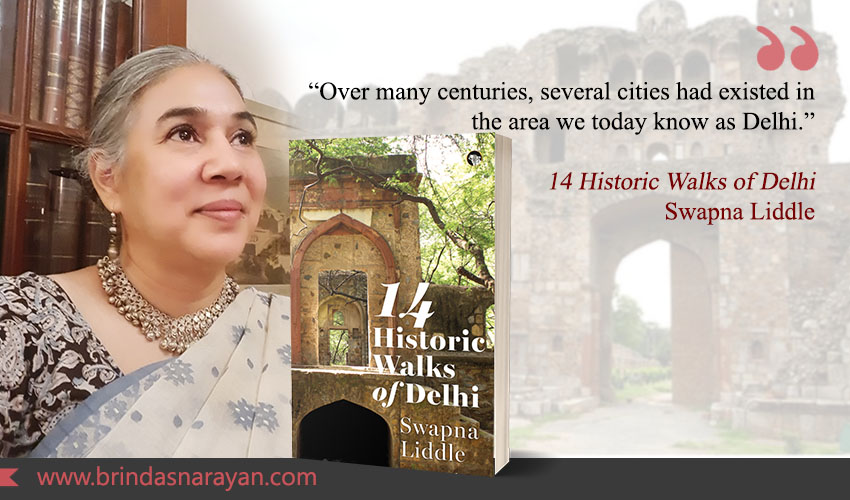
Walking Through Delhi’s Heritage With A Historian
It’s fortunate for us that Indian cities are spawning enthusiastic guides whose knowledge about these spaces can deepen our own engagement as inhabitants or visitors. Swapna Liddle is the kind of expert you would be fortunate to walk around with in Delhi. For one thing, she’s so passionate about the capital’s heritage, she’s garnered a doctorate in history. She’s also the author of many works on Delhi’s past – like Connaught Place and the Making of New Delhi, Chandni Chowk: The Mughal City of New Delhi and Shahjahanabad: Mapping a Mughal City.
14 Historic Walks of Delhi, published earlier to high acclaim, has been reissued in an updated version, spurred by inquiries from eager readers. The country, after all, is experiencing a surge in curiosity about our roots and the transformations of our cities. After all, you can’t shape a sensible future without getting a grip on the past.
The following are some interesting vignettes to give you a flavor of the book:
Delhi’s Shaky Origins
Walking into the Qutab Minar complex, or into the one-time fortified city of Lal Kot (which literally means red fortress), you saunter into a late Mughal sarai (or building), past a late Mughal garden to a Masjid, which then leads to a courtyard where you encounter an Iron Pillar with inscriptions. One of the etchings refers to Anangpal, a Tomar king, who was known to have built Lal Kot. (The Tomars were a clan who belonged to the Rajputs).
In a story titled Kili Dhili Katha or ‘the tale of the loose nail’, Anangpal had been warned by a holy man that the iron pillar had been driven into the hood of a snake that supported the planet. So keeping the pillar intact was essential to Anangpal’s stable reign. But the disbelieving or foolhardy king was intent on testing this thesis. So he tried to remove the pillar from its place, leading to the pillar becoming “dhili” or “loose”. Of course, it wasn’t just the pillar that became shaky, but also his rule over the terrain.
Wet Nurses and Plots
Across from the Purana Qila is a red gateway, the Lal Darwaza. Close to it is the Khair-ul-Manazil, which was apparently built by Emperor Akbar’s wet nurse, Maham Angah. The complex consists of a mosque and a madrasa. In those times, wet nurses emerged from “noble families” and wielded significant influence in the court. Given that these structures were built by someone who was critical to Akbar’s well-being soon after his birth, the place ironically beheld an assassination attempt on the Emperor. Someone shot an arrow at him from the roof of the madrasa, when he was riding through the area. The weapon grazed him and the shooter was caught and promptly killed.
Ghalib’s Itinerant Suffering
Inside the Imperial City built by Shah Jahan or Shahjahanabad (popularly referred to as Chandni Chowk), you can find the haveli of the poet Mirza Ghalib, who lived in Delhi from his adolescent years till his death in 1869. The Emperor, Bahadur Shah Zafar, was impoverished by then, and dependent on British handouts for his own upkeep. Ghalib, suffering from a lack of patronage, had to keep moving from one rented abode to another. The poet came from a noble family and expected to live well, but perhaps such imposed hardships led to his view that living is suffering, and death the only release.
References
Swapna Liddle, 14 Historic Walks of Delhi, Speaking Tiger, 2023




